Protests Death Toll Rises To 304; Tehran Youths Call For More Demos

The anonymous group calling itself Tehran Youths has once again issued a call for protests in different neighborhoods of the capital and other cities.

The anonymous group calling itself Tehran Youths has once again issued a call for protests in different neighborhoods of the capital and other cities.
Stressing that they will remain in the streets “until the overthrow of the Islamic Republic,” the group asked people to surge to streets Sunday afternoon in memory of Nima Nouri, a teenager from Karaj, who was killed by the direct fire of regime forces and the innocent people who were killed by “Khamenei’s shameless executioners" in the southeastern city of Khash November 4.
The mobility of protesters and their distribution in various neighborhoods, however, has now turned into a big problem for the security forces who are seen in some videos aimlessly running around to confront protesters and exhausting themselves even more after long hours of deployment.
Meanwhile, in the seventh week of the uprising against the Islamic Republic, protesters in Sanandaj in the northwest turned a funeral procession into a protest scene on Saturday.
The merchants and businessmen in Kordestan province closed their shops Saturday in solidarity with those killed Friday in Sistan and Baluchistan in the southeast.
University students, who have turned protests into a routine during weekdays, also held gatherings, sit-ins chanting antigovernment slogans across the country.
In the meantime, the death toll from the Islamic Republic's crackdown on Iran's 2022 protests has increased to 304, including 41 children and 24 women.
The Oslo-based Human Rights Organization said Saturday that the number of yet-to-be-verified reports of casualties is much more than this.
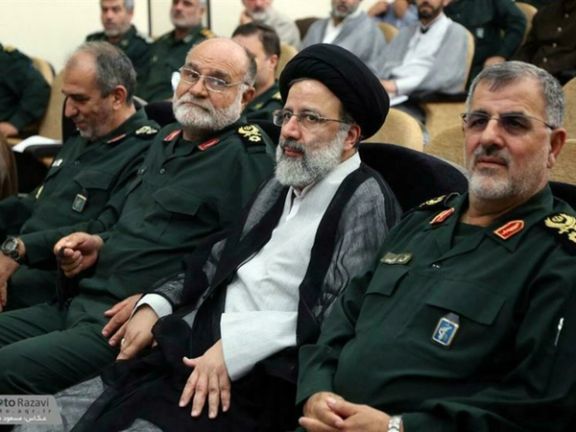
Iran’s President Ebrahim Raisi says “the plots” the United States had previously developed and used against Syria and Libya have failed in Iran.
The hardliner president said the US and other “enemies” were trying to implement the model they already used in Libya and Syria to make Iran “insecure” but their “conspiracy proved futile” in the country.
Top officials of the Islamic Republic repeating past practice have been blaming the United States and other “enemies” for ongoing protests.
Addressing a group of university students, Raisi added Saturday “the riots and those who create insecurity must be dealt with,” however, despite ongoing protests he claimed that cities in Iran are calm at present.
Since the beginning of recent protests in Iran, which was ignited by the death of Mahsa Amini in police custody, security forces have violently repressed the demonstrators in killing nearly 300 people, including dozens of children.
The severe suppression of protests, also in schools and universities, has sparked worldwide reactions with many governments, including the US, expressing solidarity with the Iranian people.
Raisi’s claim about “enemy plots” to turn Iran into Syria is made in a situation that Syrian Bashar al-Assad’s crackdown on protesters became possible only with the military assistance and troops from Iran and Russia.
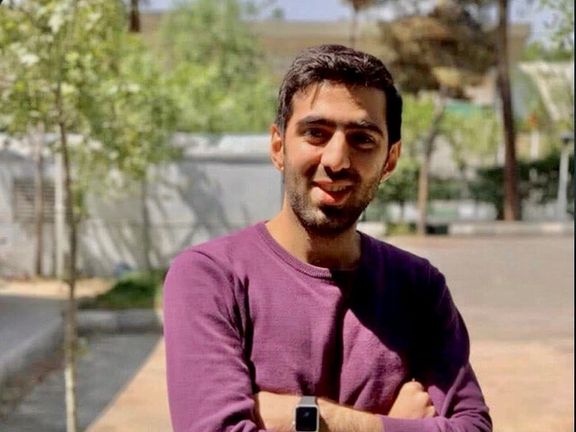
Iranian authorities try to present protesters killed by security forces as their own supporters who fell victim to the opposition or “impersonating policemen.”
“The history of mankind is full of all sorts of atrocities but stealing corpses is something the Islamic Republic has invented,” a tweet posted on November 1 said.
Some families have spoken up about the authorities’ pressures on them to deny their loved ones were killed by security forces, as others have been suffering in silence.
The family of Mahsa (Jina) Amini, the 22-year-old whose death in police custody sparked the current wave of protests nearly two months ago have publicly spoken of the pressures and threatsto force them to confirm the government version of events that led to her tragic death.
The family of 16-year-old Nika Shakarami was next. Although her own brother and sister were arrested and forced into so-called televised “confessions”, Nika’s mother refused to corroborate the authorities’ account of her daughter’s death.
The troubles of Mahsa and Nika’s families did not stop there.Knowing that the 40th-day memorials of these young people were going to turn into anti-government protests, authorities also tried to force the families to forsake public memorials and mourn inside the confines of their own homes.
Mahsa and Nika’s families resisted the pressures again and huge crowds that attended Mahsa and Nika’s memorials chanted anti-government slogans. In both cases, security forces attacked the participants and shot at them, wounding dozens of people.
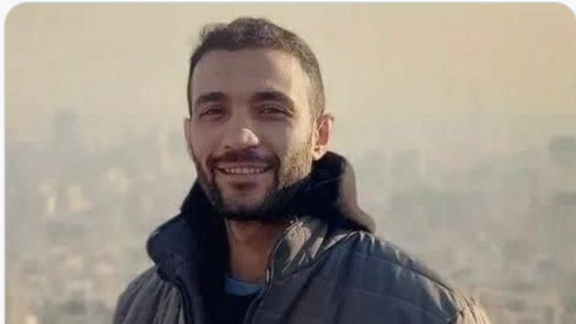
Authorities have persistently used similar pressure and threats against the families of others protest victrims.
On several occasions authorities have tried to force families to deny their loved ones’ affiliation with the protests or even validate the government’s claim that the victims belonged to the Basij militia of the Revolutionary Guards (IRGC). They claimed that these were victims of protesters or dodgy “fake policemen”.
Informed sources have told Iran International that under the threat that the body of his son would not be handed over to the family for burial, the father of Ali Fazeli, 29, was forced to corroborate the claim that he was a Basij member killed by protesters in Amol on October 27.
Accordingly, the local IRGC and its Basij militia sidelined the family and took over the burial service.
“Please forgive me Ali, I’m ashamed Ali,” his father is heard crying in footage from the private ceremony on the seventh night of his death at his family home while his mother was weeping.
But there is clear evidence in his social media that Ali Fazeli was a protester and had nothing to do with the Basij militia.
Authorities and hardliners have made similar claims about 30-year-old Hadi Chaksari, also killed in Amol on the same night. They call him, and Ali Fazeli, “Terror Martyrs”.
“It seems that the authorities didn’t expect such reactions [from the families] … These protests are much more wide-spread socially and geographically, from Baluchestan to Kordestan and Khorasan, both small and large cities,” Washington-based sociologist and commentator Hosein Ghazian told Iran International TV Saturday.
According to Ghazian, the government is not able to silence victims’ families with threats and violence as it did in previous protests for various reasons including the fact that now some of the victims hail from social circles who may have been supportive of the regime in the past such as veterans of the Iran-Iraq War (1980-1988). The regime is employing more oppressive measures, to the extent of interfering with the mourning for victims, because of greater solidarity among social classes and the opposition, he added.
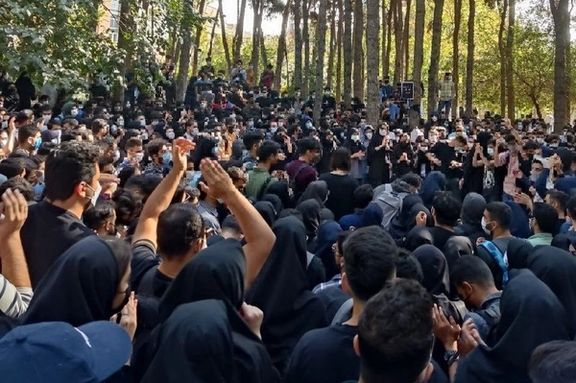
Students at various universities across Iran have announced that they will go on strike and refuse to attend classes until their imprisoned colleagues are freed.
Students at Tehran, Yazd, Beheshti, Allameh Tabatabai and Azad North said the boycott will continue as long as security forces maintain a high presence on campuses.
In recent weeks, anti-riot and vigilante Basij forces have used all their efforts to suppress students at universities, arresting hundreds.
On Saturday, security agents searched the students at North Tehran Azad University and Sharif University when they entered the campus.
Earlier, students at Yazd University also announced that they will boycott lectures starting Saturday in protest to “the illegal and inhumane actions” of university officials.
Videos received by Iran International show students at Tehran University of Research and Sciences chant slogans such as "Woman, Life, Freedom" and "Student dies, but does not accept humiliation" on Saturday.
In another video the head of Tehran University's security, Hossein Izadiyar, tells the students “If you don’t end your sit-in, I will open the door for armed forces to arrest you.” He adds threateningly that “now this issue is the [political] establishment’s redline, get up and go to your classes.”
Reports say students in Mashhad, Sanandaj, Gilan, Kermanshah, and Tehran have gathered to chant slogans. School students in several cities held rallies as well.

The Chairperson of Australian Senate Foreign Affairs Committee has urged the government and prime minister to take tangible actions on Iran regarding the violence against protesters.
Senator Claire Chandler told Iran International's correspondent in an exclusive interview that many countries are demanding action and imposing bans on Iran’s government, but the Australian cabinet has not yet taken any action.
Iran has been the scene of antigovernment protests since mid-September and the clerical regime has killed nearly 280 people.
“All Australians and particularly Australian women have been looking at what's been happening in Iran over the last few weeks particularly following the death of Mahsa Amini and really they are sympathizing with their plight and wanting to see some sort of action from Australia on the international stage,” added Senator Chandler.
She went on to say that many other countries are demanding action against the Iranian government, placing sanctions for the violence perpetrated against women and the broader Iranian population, but the Australian government has not yet taken any action.
“As in my capacity as the shadow Assistant Minister for Foreign Affairs on behalf of the opposition, I've been calling for the government to act against the position that Iran has on the United Nations Commission on the status of women. But again, that call has gone unanswered,” Chandler told Iran International.
In the end, Chandler expressed solidarity with Iranians saying, “Even though Australia is on the other side of the world to Iran, we really sympathize with the plight of Iranian women who are also very brave in protesting.”
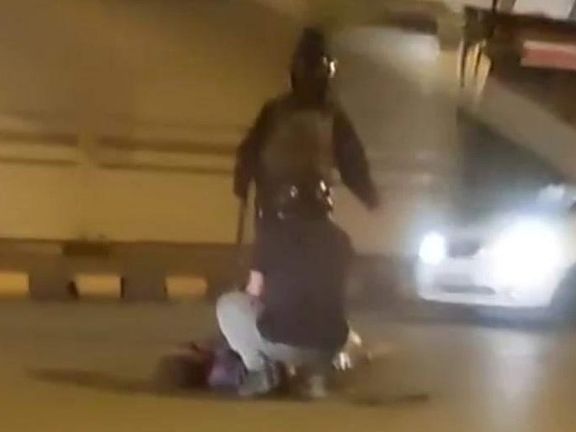
Despite security forces killing multiple people in Iran during the day on Friday, antigovernment protesters surged back to the streets after the nightfall.
Demonstrators in Tehran, Ahvaz, Bushehr, Sanandaj, Kerman, Lahijan and even in some small towns and villages like Nimvar in Markazi province and Podol in southern Hormozgan province held nightly protests.
In the capital, Javadieh, Tehranpars, Ekbatan and other neighborhoods in different corners of Tehran people took to the streets after dark, lighting fires, blocking roads, and chanting anti-government slogans.
Hours after regime forces opened fire on unarmed people in several cities in Sistan and Baluchestan Province, Zahedan’s Sunni Imam, who had earlier in the day called for a referendum during his prayer sermon, once again strongly condemned the Islamic Republic's crackdown on protesters in the city of Khash.
The moment when security forces open fire and shoot three people in Khash
Molavi Abdolhamid said security forces killed at least 16 and injured dozens of others on Friday by opening fire on protesters who were throwing stones at the governor's office.
He slammed the way the government deals with protests in Sistan and Baluchestan saying that it reveals the “depth of cruelty and discrimination.”
Armed government agents also shot at the family of Shirin Alizadeh, one of the victims of the protests in Esfahan, during a memorial on the 40th day of her death, injuring at least three. These forces also insulted Shirin Alizadeh's family and prevented them from continuing the ceremony.
Meanwhile, a shocking video proving the regime’s extreme brutality emerged Friday night that shocked many. The video shows the family of Momen Zand Karimi washing the dead body of their teenage son before laying him to rest in a remote village Thursday night as government officials did not allow them to bury him in his home city of Sanandaj.
Momem Zand Karimi was killed by birdshots fired from shotguns during Wednesday protests when he was on a short leave from his military service.
Scenes of a vigil held for another victim Erfan Zamani in the northern city of Lahijan and also the video of the dead body of a young boy in Khorramdasht near Karaj, who was shot in the head and carried away by a police pickup truck on Thursday, were among other videos going viral.
While using lethal force against demonstrators, the government tried to bring out its supporters on Friday to mark the anniversary of taking American diplomats hostage in 1979.
However, the attempt was a disaster, as the Islamic Republic failed to mobilize its supporters and in some cities people who showed up were a few dozen or a few hundred. The state TV began using old footage to claim a big turnout. For Sanandaj, a hotbed of protests the TV showed a large crowd marching in rain, while the weather was sunny in the city.
The state TV was also forced to air some similar shots for different locations to show the presence of a large crowd.